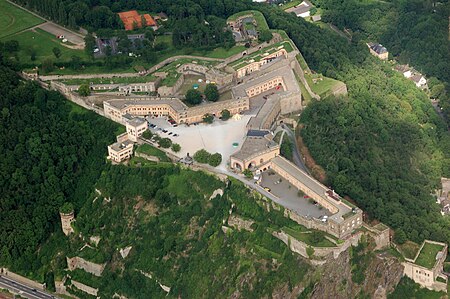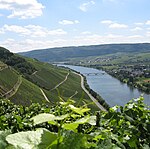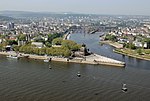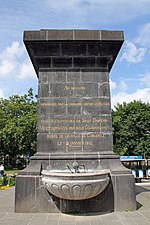Ehrenbreitstein Fortress

Ehrenbreitstein Fortress (German: Festung Ehrenbreitstein, IPA: [ˌfɛstʊŋ ˈeːʁənbʁaɪtʃtaɪn] (listen)) is a fortress in the German state of Rhineland-Palatinate, on the east bank of the Rhine where it is joined by the Moselle, overlooking the town of Koblenz. Occupying the position of an earlier fortress destroyed by the French in 1801, it was built as the backbone of the regional fortification system, Festung Koblenz, by Prussia between 1817 and 1828 and guarded the middle Rhine region, an area that had been invaded by French troops repeatedly before. The Prussian fortress was never attacked. Since 2002, Ehrenbreitstein has been part of the UNESCO World Heritage Site Upper Middle Rhine Valley.
Excerpt from the Wikipedia article Ehrenbreitstein Fortress (License: CC BY-SA 3.0, Authors, Images).Ehrenbreitstein Fortress
Hofstraße, Koblenz Ehrenbreitstein
Geographical coordinates (GPS) Address Website External links Nearby Places Show on map
Geographical coordinates (GPS)
| Latitude | Longitude |
|---|---|
| N 50.365 ° | E 7.6152777777778 ° |
Address
Festung Ehrenbreitstein
Hofstraße
56077 Koblenz, Ehrenbreitstein
Rhineland-Palatinate, Germany
Open on Google Maps











